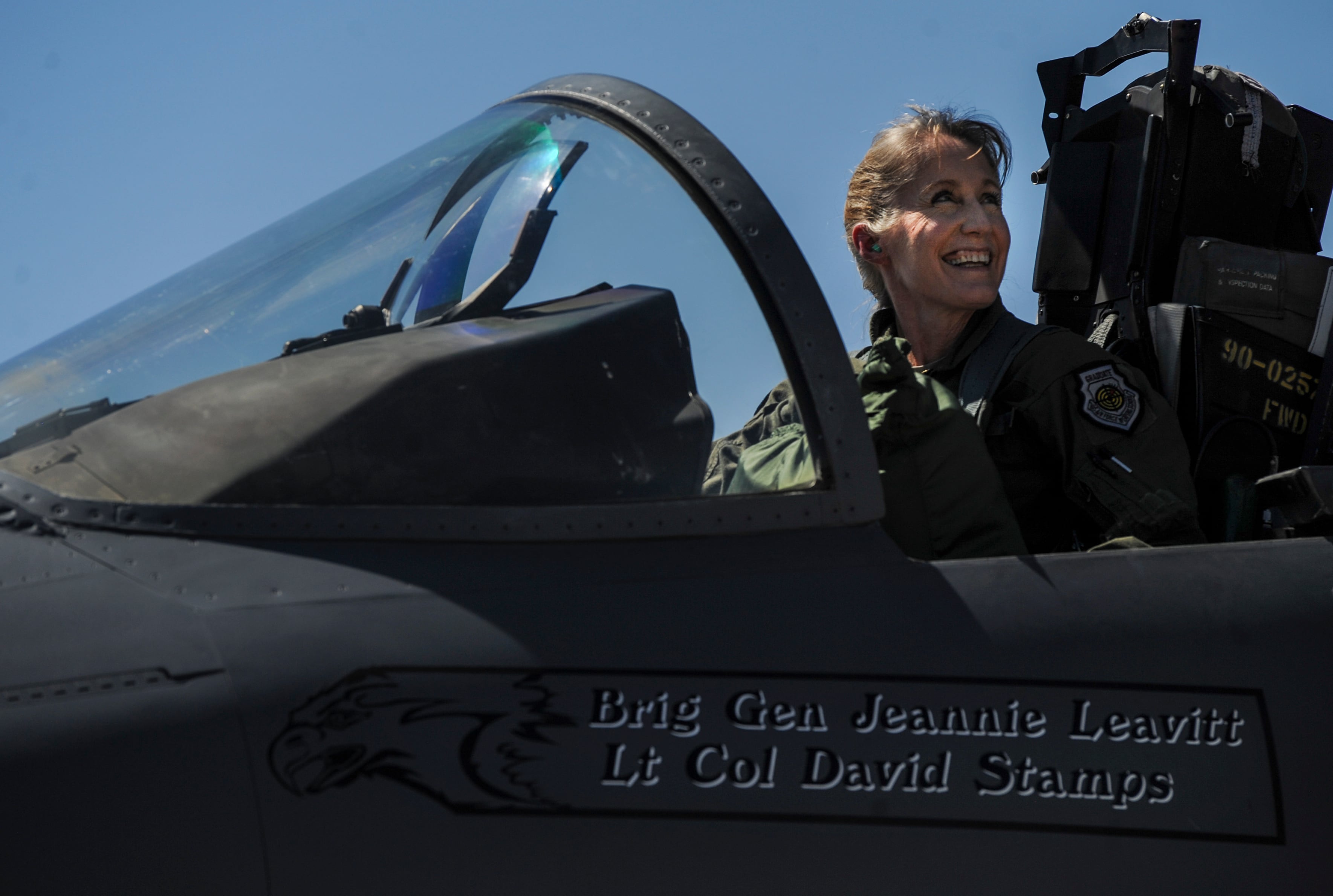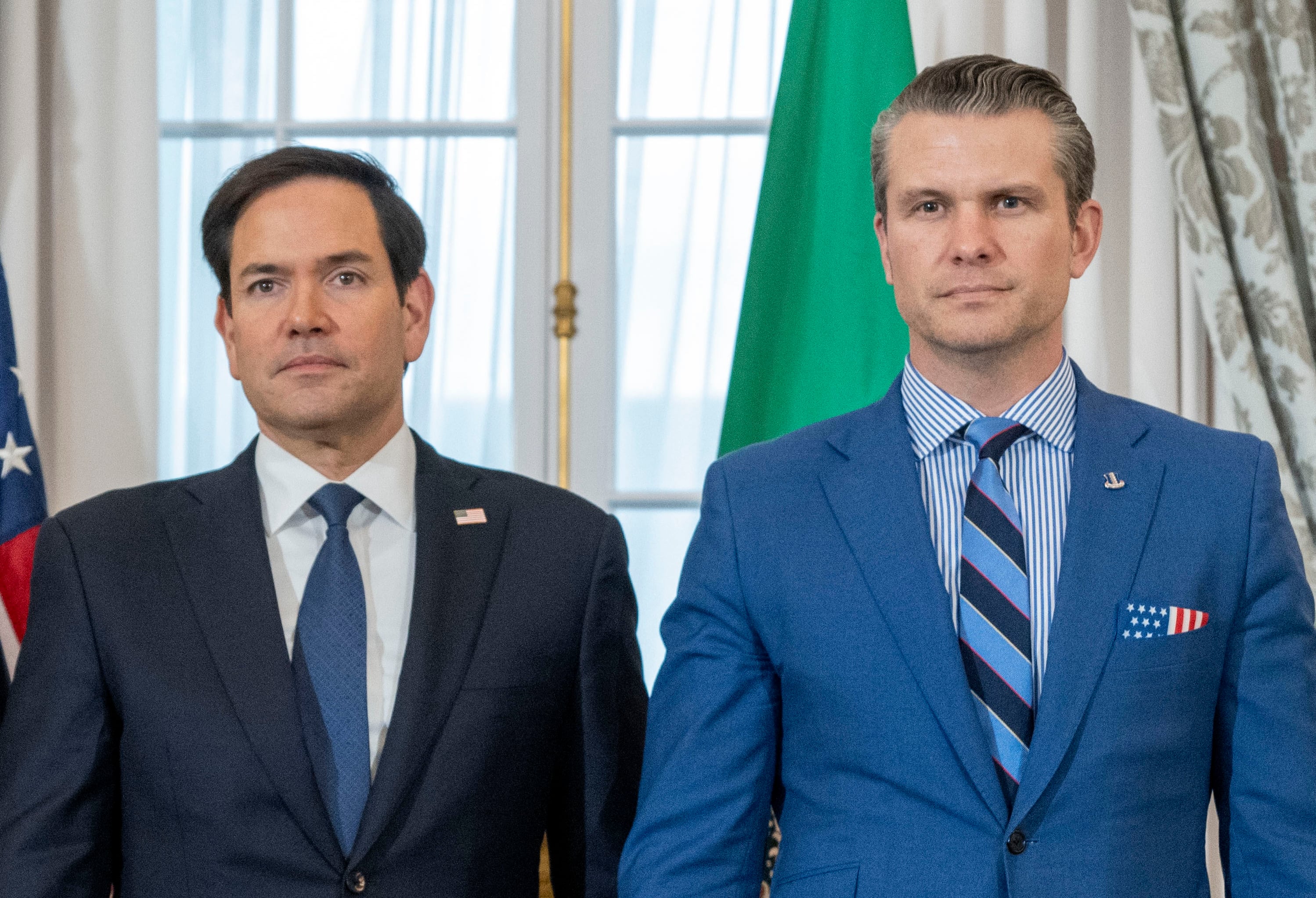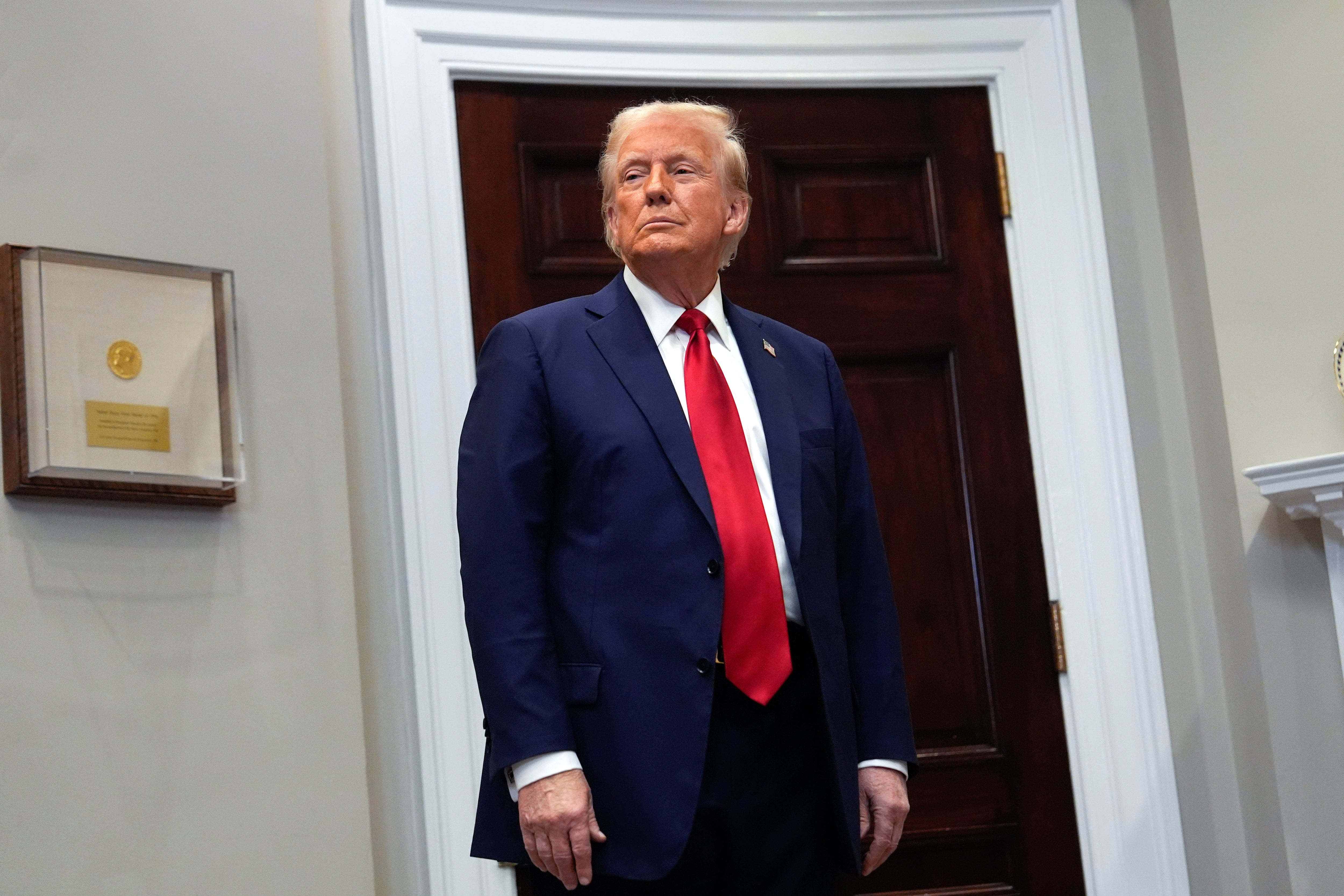Airmen at Nellis Air Force Base, Nevada, and members throughout the Las Vegas community have labeled Brig. Gen. Jeannie Leavitt a "local celebrity" as being the Air Force’s first female fighter combat pilot and the first woman to take control of the 57th Wing this year.
But it's nothing more than a humbling experience, Leavitt says, as she works to get airmen, male and female, to take their careers to new heights.
"If I can convince any young person to follow their dreams, that is very fulfilling for me," Leavitt said in an interview with Air Force Times July 12.
The Defense Department in 1993 amended the rule that prohibited women from serving in combat aviation positions. Leavitt was first in line to graduate that same year from pilot training and jumped right into the seat of the aircraft she most wanted to fly: the F-15 Strike Eagle.
Leavitt has held a myriad of assignments since then, from commanding squadrons to wings, and has deployed to Iraq and Afghanistan for Operations Southern Watch, Northern Watch, Iraqi Freedom and Enduring Freedom.
Her call sign, "Tally," is only her nickname to those who outrank her. "There's always a long story, and I rarely give that story out, but tally-ho is what you say when you see the enemy aircraft," Leavitt said, alluding to the origin of her nickname.
And no, she has not tallied up the number of strikes she's executed during her career. If anything, Leavitt says she's "lost count." She has logged 109 combat sorties and 338 combat hours.
For the newly pinned-on one star, her role is more than just preserving the Air Force’s legacy as the world’s finest aerial force. The 57th Wing flies and maintains more than 130 aircraft — everything from the A-10, F-15, F-22 to the soon-to-be-operational F-35, plus the Air Force's Thunderbirds demonstration squadron.
Leavitt wants to make the training airmen receive is the most "realistic and relevant" when going against a very capable present or future threat.
"Right now, the main fight we're fighting is not the most advanced threats," said Leavitt, who also oversees the Air Force Weapons School. "However, future scenarios could be different ... and we need to be prepared in whatever tomorrow's fight might be, and...ensure victory in those conflicts."
"I joined the Air Force because I wanted to fly airplanes," Leavitt said, noting a common theme for a good number of members who join the service. "But I stayed because I loved what I was doing. I love the mission, I love the people. It’s incredibly humbling to know ... you’re playing a role in defending our freedoms, in letting people sleep at night without concerns about their freedom — it’s incredible. For me, it means so much."
Air Force Times chatted with Leavitt about her vision for the 57th Wing and beyond. Comments have been edited for clarity and brevity.

Brig. Gen. Jeannie Leavitt, an F-15 Strike Eagle pilot with more than 3,000 flight hours, became the first female combat pilot in 1993. Leavitt sits aboard the aircraft bearing her name at Nellis Air Force Base, Nevada, on July 13.
Photo Credit: Airman 1st Class Kevin Tanenbaum/Air Force
Q. Moving forward as the 57th Wing Commander, what's the primary focus right now?
A. It is an incredible honor and privilege to serve as the 57th Wing Commander. The mission here is so important. We provide the most advanced, realistic and relevant training that is focused on ensuring that we dominate across all the domains: air, space and cyberspace. The training we do here, through the weapons school, we have the absolute [best] integration experts in our Air Force that we train right here. HER "EXPANDED" ANSWER, which sounds too forced to me, but let me know//OP >> With the amazing 57th Wing leadership team, we will evolve our training programs so our forces can train against an advanced, realistic and relevant threat. We will continue to improve our joint warfighting capabilities to ensure our forces are victorious in today's fight. We will also prepare our forces to win tomorrow's conflicts by further integrating across air, space and cyberspace.
Q. What are some examples of how the 57th Wing and its units have evolved in recent years?
A. The weapons school was once very fighter and bomber focused. We have expanded on those platforms, whether it's mobility, space, cyber...and it's not restricted. Command and control has been there, intelligence, and we recently added a [joint terminal attack controller] element. The feedback from integrating our JTACs has been great from in theater.
Red Flag 16-3, for example, began July 11. In this case, our threat isn't just going to be composed of air threats or surface threats. We go across the domain. Our "blue" forces have to tackle the "red" tactical problems across all of [air, space and cyberspace] in order to be successful. This is something that's been developing, but it's come a long way since I went to Red Flag back in the 1990s. The focus was purely on getting the newest wingmen experience so that they would be successful when they would go into combat….now, we really [focus on] integrating the domains.
We need to be able to counter those threats. We look at different countries and potential adversaries of the future, and the capabilities that exist and train against it ... Nevada has a great training range which allows us to set up different scenarios and threat capabilities based on potential adversaries. The Marines have brought their F-35s to Red Flag this year, and I am looking forward to having the F-35s integrate into this exercise.
Q. How are modern wars, such as fighting the Islamic State, shaping how pilots operate?
A. We have a number of exercises that get us ready. Green Flag, for example, when we're working with our Army partners and we're working with our close-air support scenarios, that's what we see in the current fight in the Middle East.
Q. How are the squadrons you command, which depend on so many training and flight hours, bouncing back from the temporary pause during sequestration?
A. When sequestration took effect, I was the 4th Fighter Wing Commander at Seymour Johnson [Air Force Base, North Carolina] and one of our operational squadrons stood down for 99 days. Here at Nellis, they lost an entire class at the weapons school. Now that we're beyond sequestration, we have the ability to have our normal classes go through and train our weapons officers, and to train our aviators for those first combat missions.
Q. The Thunderbirds aircraft have been modified F-16As since 1982. Are there plans to change to a new aircraft?
A. No, there is no plan for the Thunderbirds to use any aircraft other than the F-16 in the near future. The Thunderbirds F-16s are some of the best maintained aircraft in the world. We have 11 assigned aircraft and 90 maintainers who are hand-selected for the team. Each Thunderbird pilot is a highly-skilled combat fighter pilot with more than 1,000 flight hours to include combat time. I am truly impressed every time I see the Thunderbirds perform
Q. With the F-35 coming on board soon, some controversies still surround the ejection seat's weight limits. Do you believe this is going to disproportionately affect female pilots?
A. Right now the challenge we have is simply a safety concern. And it's not male or female, it's a weight restriction. We do have females flying the F-35. They believe that pilots weighing less than 136 pounds will have a higher risk [in an ejecting scenario] in the sense that they have a lower neck strength to absorb the force of an ejection. There are some fixes in the works that should be fully implemented by next summer, and that will hopefully negate that challenge.
Q. What's one memory that really sticks with you every time you go up and fly?
A. I deployed to Bagram [Airfield, Afghanistan] in 2009 as the deputy ops group commander. And one day I was in the office and this young Marine walked in. He's probably about 19 or 20 years old. He was mid tour, and he was pretty fired up. He wanted to talk to one particular pilot of the Strike Eagle pilots ... He told me about when they were taking a lot of enemy fire, things weren't looking too good, the Strike Eagles came in and dropped weapons. I gladly drove him over to the squadron and introduced him to a lot of the aviators because understanding the impact of flying those missions firsthand from someone on the ground is incredibly inspiring.
Oriana Pawlyk covers deployments, cyber, Guard/Reserve, uniforms, physical training, crime and operations in the Middle East and Europe for Air Force Times. She was the Early Bird Brief editor in 2015. Email her at opawlyk@airforcetimes.com.





